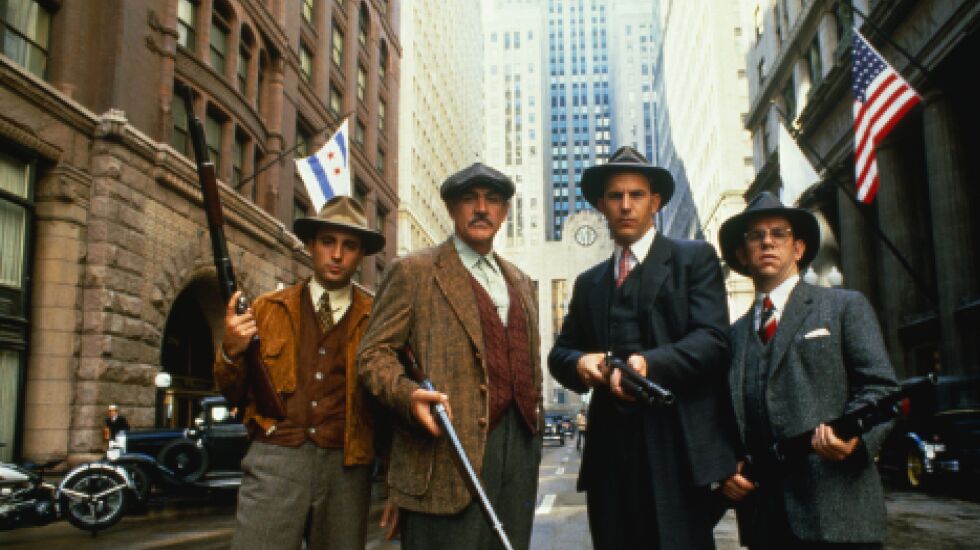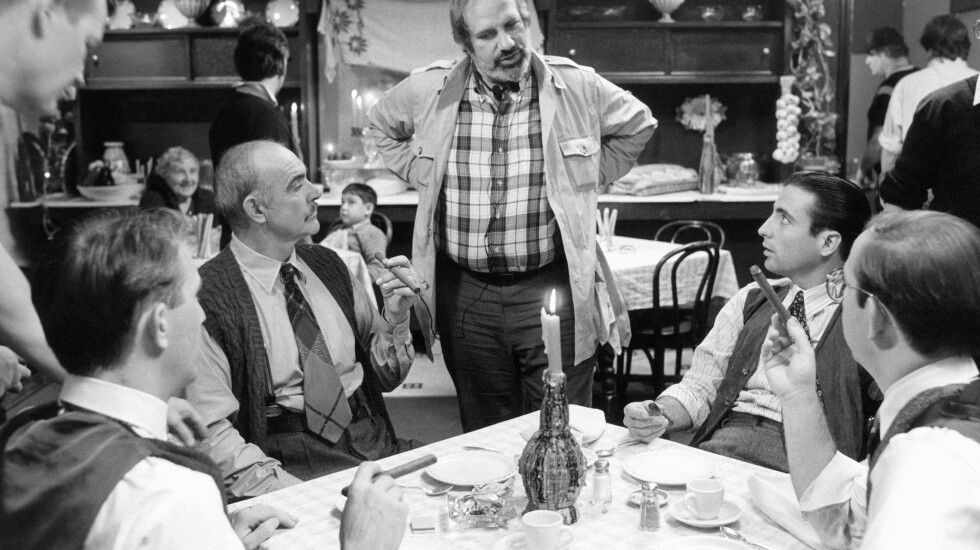
“I do not approve of your methods.”
“Yeah? Well you’re not from Chicago.” – Exchange between a Canadian Mountie captain and Eliot Ness in “The Untouchables.”
When we talk about “The Untouchables,” the first scene that leaps to mind is the famous exchange between Kevin Costner’s Eliot Ness and Sean Connery’s Jimmy Malone at Our Lady of Sorrows Basilica in East Garfield Park, when Malone tells Ness if he wants to get Al Capone …
“They pull a knife, you pull a gun. He sends one of yours to the hospital, you send one of his to the morgue. THAT’S the Chicago way! And that’s how you get Capone.”
That’s the scene Barack Obama quoted during the 2008 presidential campaign. That’s the scene that likely cemented the best supporting actor Oscar for Connery. It’s iconic. It’s fantastic. But as we observe the 35th anniversary of Brian De Palma’s Chicago-centric classic’s opening in June 1987, I’ve come to love another snippet of dialogue even more than the aforementioned quote. It’s the moment when Ness confronts a judge in his chambers and justifies his actions: “I have foresworn myself. I have broken every law I swore to defend, I have become what I beheld and I am content that I have done right!”
All of a sudden, this taciturn man sounds downright Shakespearean in his eloquence in a moment of great passion and it’s not the least bit plausible but it’s great, and that’s your David Mamet screenplay right there. For all its moments of stunning violence and outlaw rage, “The Untouchables” is also unforgettable for Mamet’s brilliant dialogue and his wildly inventive plot, which contains two pieces of historical fact:
1. There was an infamous Chicago gangster named Al Capone.
2. There was also a prohibition investigator named Eliot Ness who formed a team of agents known as the Untouchables.
On those two counts, “The Untouchables” stays true to the facts. That’s about it.
All right, so we might be engaging in a little hyperbole of our own here, but great swaths of “The Untouchables” are pure imagination. Jimmy Malone is a fictional construct. The raid at the Canadian border, the courthouse shootout, the famous staircase scene in Union Station … none of if happened. (Nor did Eliot Ness throw Frank Nitti off the roof of a downtown building. More than a dozen years after the events depicted in “The Untouchables,” Nitti shot and killed himself in a railroad yard a few blocks away from his home in Riverside.)
Does it matter? Not really. We love “The Untouchables” because it’s essentially a 1930 Western pitting the underdog good guys led by Eliot Ness against the rotten-to-the-core bad guys of the Capone-helmed Chicago mob, and it’s filled with that memorable dialogue and a myriad of beautifully executed set pieces. It’s a key chapter in Kevin Costner’s ascent to movie stardom, as “No Way Out” was released later in that same summer of 1987, followed by “Bull Durham” in 1988, “Field of Dreams” in 1989 and “Dances with Wolves” in 1990. (Pretty good run!) “The Untouchables” was also an early touchstone in the career of Andy Garcia—and of course we got that career-crowning, Academy Award-winning performance from Connery as the Irish Chicago cop with the Scottish accent.

De Palma and his director of photography Stephen H. Burum set the flourishing visual tone early on, in twin scenes introducing us to Capone and then Ness. The first time we see Robert De Niro’s Al Capone, it’s an overhead shot as Capone holds court with reporters while getting his shoes shined, a manicure and a shave. Here is a man of opulence; here is a man of power. Here is a man who flaunts his criminal ways in public, telling the media, “There is violence in Chicago of course—but not by me and not by anybody I employ and I’ll tell you why: because it’s not good business.” Whatever you say, Scarface.
We cut to the Ness household, all warm and cozy and understated, as Eliot Ness reads the newspaper with the headline about a 10-year-old girl who was killed in an explosion caused by Capone’s henchman Frank Nitti. After a loving exchange with his saintly wife (a perfectly cast Patricia Clarkson), Ness heads out to his first day on a new assignment: taking down Al Capone and the Chicago syndicate. It’s clear from the get-go he’s a decided underdog.
Much of the fun in rewatching “The Untouchables” is spotting all the Chicago locales. (A notable exception: the railway raid, with Montana filling in for Canada.) The café blown up in the opening scene is now the site of the Houndstooth Saloon in Lakeview; the pedestrian deck of the Michigan Avenue Bridge is where Ness meets Jimmy Malone; the site of Capone’s infamous baseball bat-bashing of a wayward underling is the Crystal Ballroom of the Blackstone Hotel on South Michigan Avenue. As we see from the address scribbled on Frank Nitti’s matchbook, Jimmy Malone lived at “1634 Racine,” an apartment that has since been supplanted by University of Illinois-Chicago structures. As for the “Lexington Hotel” where Capone is holed up—the first floor is actually the Chicago Theatre.
“The Untouchables” is heavy on the fiction, but thanks in large part to those great Chicago locales, it feels palpable and real.







